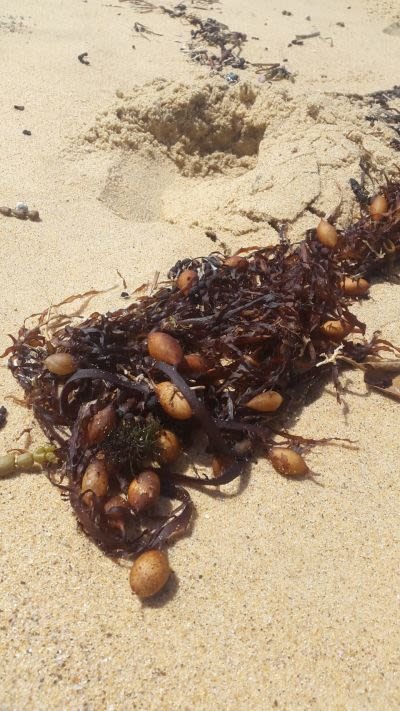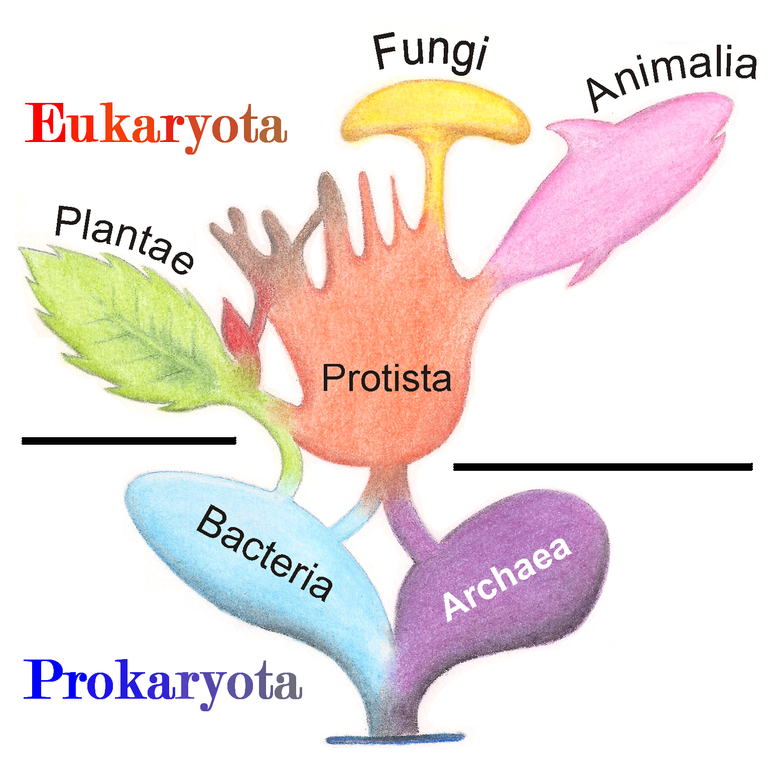The 7 kingdoms of living
Version française : Steemit | Busy

So, tell me my Lord, who reigns on this Earth?
The biosphere is all the living organisms on Earth, that take into account every individual! Good luck to count them!
So, the biosphere is divided into two superkingdoms that you already know. Prokaryotes and eukaryotes. Prokaryotes are divided into two kingdoms and five for the eukaryotes.
Let’s start with prokaryotes, the first one that you know is the bacteria (Bacteria), the second one is archaea (Archea). This second group is a quite strange, they are prokaryotes, but they share characteristics with eukaryotes. Most of them are extremophiles, it means that they live in extreme conditions like salt lakes, geysers, oil well, black smokers, … However, none of them are dangerous for human contrary to bacteria.
 They are strange!
They are strange!
Let’s go to the five eukaryotes kingdoms:
The most famous is, of course, the animals’ kingdom (Animalia), very diversified ranging from insects to kangaroos, through crabs. They are pluricellular organisms that feed themselves with other organisms (organic substance), heterotroph so.
Then there are plants (Plantae), very famous and diversified kingdom ranging from palm trees to algae through the Stade de France’s grass. They are autotrophs, they feed themselves by photosynthesis and element absorption (of course they are pluricellular).
The third kingdom is the fungi (Fungi), which are neither plants nor animals. Actually, they are pluricellular organisms (some are unicellular), heterotrophs but they have vacuoles in their cells (plants specificity). This kingdom is also well diversified ranging from truffles to your feet mycosis through lichens (group of species very interesting, I will get back on this).
You must wonder what we will see now! The next kingdoms are very discreet.
The protist kingdom (Protozoa), most of them are unicellular, however, they can form supercolonies (we don’t talk about pluricellularity but about multicellularity in this case). They are heterotroph, they are at the origin of animals’ and fungi’s kingdoms. They are not really diversified but they include very virulent parasite species (like malaria). We will see together what parasite is.
And the last one, the chromista (chromista), they are really a little part of the biosphere, they have chloroplasts (plant characteristic). Inside we find brown algae, like this one. I found it on a beach in Australia.

Merewether beach, Newcastle (Australia)
But this group is not very important, in addition, it’s quite ambiguous.
This representation is very well:

Source: https://fr.wikipedia.org/wiki/R%C3%A8gne_(biologie)#/media/File:Tree_of_Living_Organisms_2.png

A question taunts me! We don’t talk about viruses in these kingdoms, where are they?
Haha, that is an issue! Indeed, viruses are not including in this classification. Like if they are dead organisms. But I need to explain to you what viruses are before telling you more.
Reference :
https://fr.wikipedia.org/wiki/R%C3%A8gne_(biologie)#cite_note-aub17-3
https://fr.wikipedia.org/wiki/Chromista#cite_note-1
https://fr.wikipedia.org/wiki/Archaea
https://fr.wikipedia.org/wiki/Plante
https://fr.wikipedia.org/wiki/Animal
https://fr.wikipedia.org/wiki/Protista
https://en.wikipedia.org/wiki/Evolution_of_fungi
What this Dr.Plantes want me?

#01_Where are we? What time is it?
#02_The bacteria (recommended)
#03_The DNA
#04_The evolution
#05_The cell
#06_The fission
#07_DNA replication
#08_The reproduction
#09_The molecules
Being A SteemStem Member
Nice one @docteur-plantes
Well, I want to add a name who gave this five kingdom classification: "R. H. Whittaker".
waiting for the viruses............. :)
Yes, so many great scientists who worked on this classification! For me, the most important is Carl von Linné who is the first one to start a classification of the living in the 18th century.
The viruses is the next one :)
Bravo pour les images c'est bien